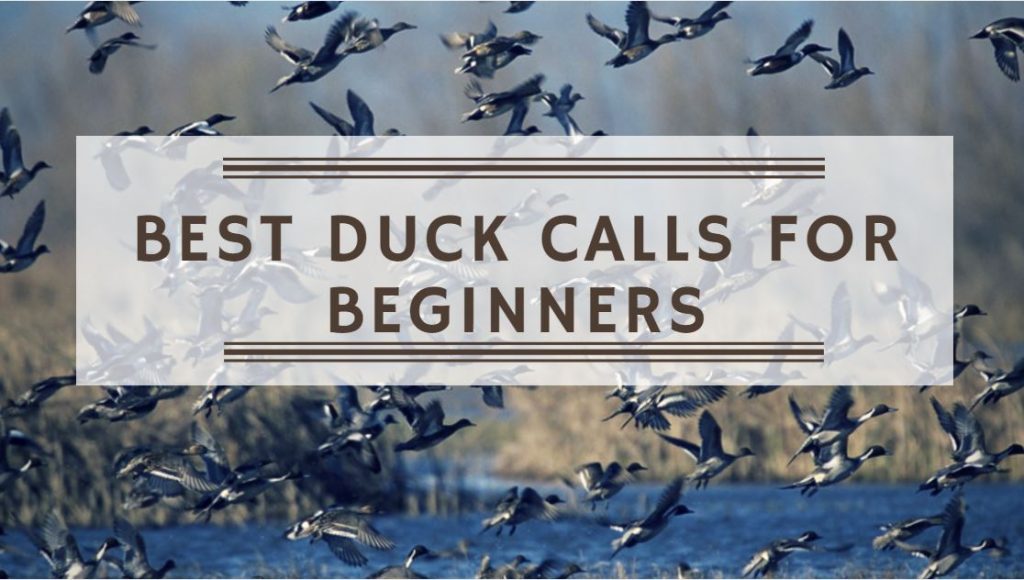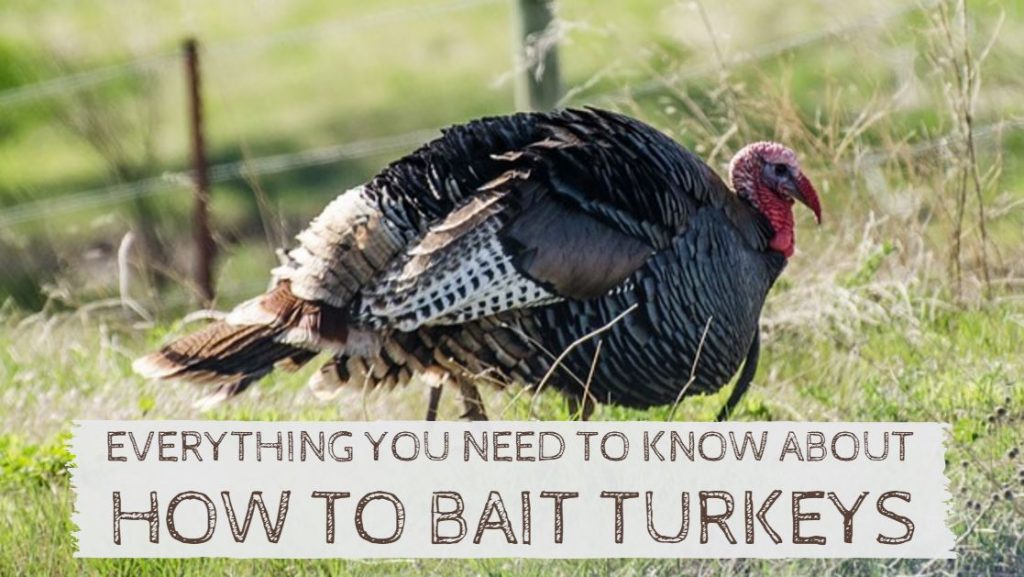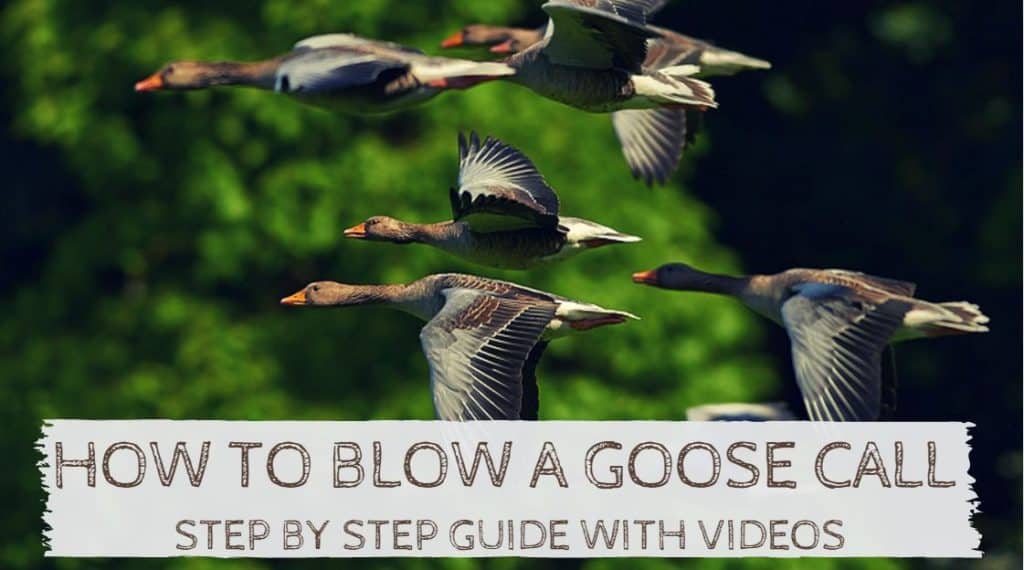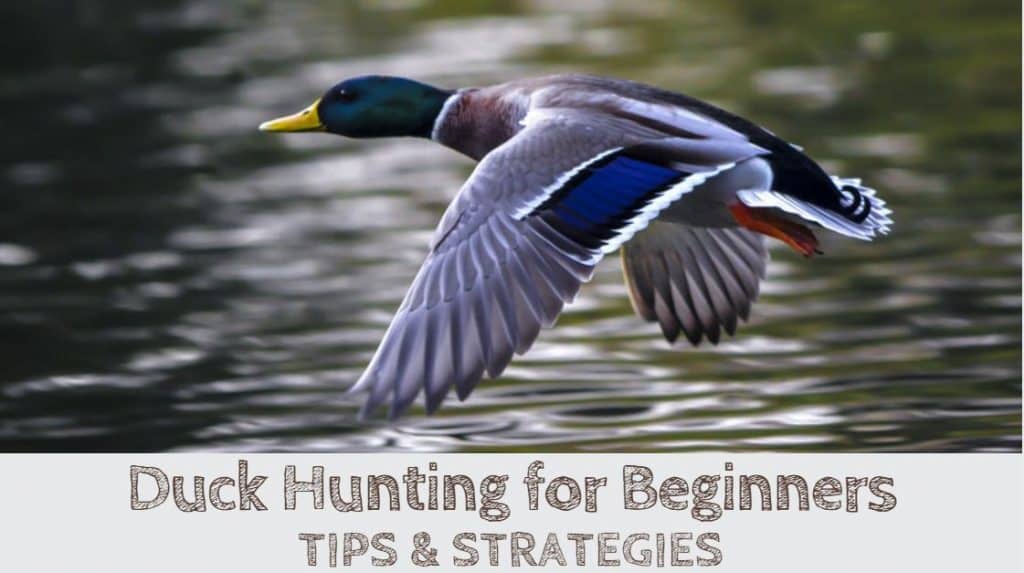Looking for the Best Duck Calls for Beginners? You’ve come to the right place.
A duck call is one of the first pieces of gear that new waterfowl hunters should look to buy. But it is not easy finding a call that is easy to blow and sounds realistic. So, we have reviewed some of the top calls on the market to find you the Best Duck Calls for Beginners.
Over the past 20 years, I’ve hunted ducks and geese from Manitoba and Arkansas to all over the Atlantic flyway. In that time, I’ve guided many hunts and helped a ton of new hunters get started. So you can trust me to know what makes a good call for beginners. All the calls on my list are easy to use (don’t require a ton of air pressure), realistic (sound like a duck), and affordable. They may not win any calling competitions, but they will bring ducks to your hole.
- Durable Polycarbonate Build: Made from high-quality...
- Triple Reed Design for Realism: Features a triple reed...
- Great for Mallard Hen Calls: Specifically tuned to create...
Last update on 2025-07-11 / Paid links / Images from Amazon Product Advertising API
Now let’s move to our in-depth reviews.
The 7 Best Duck Calls for Beginners Reviewed
Here is our pick of the top 7 beginner duck calls…
- Duck Commander Triple Threat – Best Overall
- Haydels DR 85 Duck Call – Alternative/ Runner-up
- Buck Gardner Double Nasty – Best Double Reed
- Duck Commander Uncle Si – Best Single Reed
- Flambeau Outdoors Megaphone – For Open Waters
- Echo Calls Diamondwood – For Close Range/ Finishing
- Buck Gardner 6-in-1 Whistle – Best Whistle
1. Duck Commander Triple Threat
Duck Commander sent waves through the waterfowling world when they put the Triple Threat call on the market. It was the first call that used three reeds to give callers an incredible level of control – making it easy to use even for beginners.
So I decided to buy one during the last season. Out of the box, the call felt tough and durable due to its polycarbonate construction. I knew it would work well even in challenging weather. It came with precise cleaning instructions. But it was very easy to take apart, clean, and re-assemble the call.
All through my trip, I found it easy to replicate realistic mallard hen sounds such as quack, feed, and hail calls. You can use it to produce low gravel tones or high scratchy pitch depending on your target. But your call will carry in any weather condition.
The Triple Threat must be your top choice if you are looking for an easy-to-blow call. The triple reed design allows you to produce a whole range of realistic sounds with little air. So even beginners will find it easy to sound like the pros. You can easily disassemble it for cleaning. It doesn’t change its sound after reassembly.
Pros
- Super easy to blow
- Loud and realistic sound
- Value for money
Cons
- None
2. Haydels DR 85 Duck Call
Haydel’s DR 85 is one of the top-selling double reed calls on the market as it is extremely affordable and very easy to blow. Many new duck callers use it to produce a wide range of sounds.
I tested it during one of my waterfowling trips to Manitoba. It was ready to use out of the box and needed no tuning. But it comes with a fully adjustable floating wedge so you can tune it to sound like a mallard or a teal.
During my hunting trip, I used this call on several days. The call felt solid and well-built in hand and the clear plastic let it blend in with the surroundings. It blew wet and never went out of tune. I was able to mimic the exact sounds of the mallard – including quack, greeting, pleading, and feeding calls.
You need very little air to produce a good sound using DR 85. Just follow the instructions on the cardboard and you will find it easy to make different calls. I suggest beginners mark the reed on the top using a marker. It will help you make sure your call is right-side up when using it.
Pros
- Easy to blow
- Needs very little air
- Extremely affordable
Cons
- Not suitable for hail call
3. Buck Gardner Double Nasty
Buck Gardner brought big-time innovation with this unique double reed duck call. The Spit-Tech tone board doesn’t stick when it is wet from saliva, rain, or water. So you can blow this call to make highly realistic sounds even in the most adverse conditions. This makes Double Nasty one of the most popular duck calls out there.
I love this call so much due to its raspy tone, it’s always a part of my hunting gear. I picked another one last season for my waterfowl hunting trip to the Eastern Shore of Maryland. Out of the box, it was tuned, tested, and ready to blow – which is great for beginners. It felt quite solid in hand due to its polycarbonate construction and aluminum band. It looked sharp too.
On my first attempt, I managed to call in a few mallards who landed just behind me. The call was loud and raspy throughout my trip. I was able to make even some of the tougher calls like the hail and the comeback quite easily. Some of my other calls froze due to the weather, but not this one.
You must have the Buck Gardner Double Nasty on top of your list if you are looking for the best double reed duck call. It has such a short learning curve, you will be making realistic calls in hours and not days.
Pros
- Blows when wet
- Loud and raspy
- Hand-tuned and tested
Cons
- Hitting high-pitch notes takes some practice
4. Duck Commander Uncle Si
Learning how to blow a single-reed call is generally more difficult. So I suggest most beginners start with a double or triple reed call. But this one is actually designed for beginners. Just check any online store selling duck hunting gear. You will find a ton of positive reviews from novice and amateur hunters.
Out of the box, I loved the nice green color and the strong polycarbonate construction. I could feel the call would hold up well in any kind of weather. Single-reed calls anyway tend to be more durable and keep their sound from season to season.
I used the Uncle Si call during my hunting trip to Indiana Lake near the Indiana-Michigan state line. The call was extremely easy to blow and produced realistic Mallard sounds. The high, raspy tone carried long and far on the open water. I had duck mayhem within a few minutes of starting calling!
So I suggest you pick Uncle Si if you are looking for your first single reed call. It is not just easier to use but also quite durable and affordable. It is one of the very few single reed calls on the market that I feel confident enough to recommend to beginners.
Pros
- Wider range
- Loud, raspy sound
- Very strong and durable
Cons
- Will take more practice than a double reed. But much easier than other single reeds.
5. Flambeau Outdoors Megaphone

The Megaphone is part of Flambeau Outdoors’s Big River specialty series. It is quite popular among waterfowl hunters as a loud and hard-hitting call. So I decided to test it out as I needed a high-volume call for my diver duck and sea duck hunting trip to the Chesapeake Bay.
Out of the box, I loved the Mossy Oak finish and the polycarbonate construction. It felt durable enough to last season after season.
The Chesapeake Bay can get really cold and windy. You will often find ducks out of range of your call. But this Megaphone call was so loud that it helped bring even distant ducks closer. It handled the challenging climate quite well and I found it easy to make realistic calls.
The Megaphone is now my go-to call for loud hails and comebacks over wide open waters and fields. It is one of the loudest calls I’ve used that didn’t require a ton of air pressure.
Most loud calls on the market come with a single reed – so many beginners find them more difficult to use. But this one features a double reed making it relatively easier to master.
Pros
- Loud and high-volume
- Great for open waters
- Easier to learn
Cons
- Not suitable for close-range
6. Echo Calls Diamondwood

Most beginners struggle while timber hunting or calling ducks in at a close range. That’s where Echo Calls Diamondwood can help you. It is precisely designed to help waterfowlers produce lower and softer sounds. I can’t tell you how many experienced guides I’ve seen using this call. Why? Because it is a great finisher call for close-in calling.
I picked this call to test it out during my recent hunting trip. Out of the box, I loved the hybrid construction with a wood barrel and a polycarbonate insert. It comes hand-tuned and ready to use. Hand tuning assures the call is realistic and sounds like a duck – which is very useful for beginners.
I used this call extensively during my trip and found it a great call for making low soft-pitched sounds. You can use it even on the marsh or open water once you know how to control air pressure.
It worked even when wet. But if it gets too wet, you must take out the insert and let the barrel dry out. Remember, it is made out of wood and the water may cause it to swell or freeze in cold weather conditions.
Pros
- Great call for soft sounds
- Hand-tuned and ready to use
- Easy to blow
Cons
- A bit on the expensive side
7. Buck Gardner 6-in-1 Whistle

Most brands these days make a whistle for calling mallard drakes, wood ducks, teal, widgeon, pintail, and bobwhite quails. Beginners love whistles as they are the easiest to master and more fun.
So I picked the BGC 6-1 whistle to test it out during my recent waterfowling trip. It came in black color and looked sharp. The larger bell-end design makes it loud enough to call ducks in medium range.
Within a few minutes of starting calling, I had pintails, teal, and wigeons trying to get into my decoy spread. I was amazed at how such an inexpensive call can produce such a wide range of sounds. It may be one of the best budget duck calls I’ve ever used.
This call was so easy to use, that I am happy to recommend it to any beginners looking for a duck whistle. It comes with step-by-step instructions to help you make it sound like the species you’re targeting. Having this call on your lanyard will give you excellent versatility.
Pros
- Six calls in one
- Fun and easy to use
- Great call for the price
Cons
- Mastering all six calls takes practice
How to Choose the Best Duck Calls for Beginners
You have a myriad of duck calls out there on the market. But each one is designed for a specific species, technique, or condition. So you must have a fair idea about your requirements to pick the right call for your trip. If you know already, look at our list of the Best Duck Calls for Beginners and choose one as per your specific needs and personal preference.
But many hunters beginning their waterfowl journey need help choosing a call. After all, it’s not just another gear, but an extremely important one. And, it is not easy to find duck hunting information online or in magazines. Most of the knowledge is still with guides and seasoned hunters. So I wanted to make it easy for beginners to go over the key things to consider before buying their first call.
If you are looking for Goose calls, then you can read our reviews of the Best Goose Call For Beginners to help you pick one.
Species
Calls can help you catch the attention of ducks and bring them within your shooting range. But they are effective only if you use them to produce realistic sounds of the species you’re targeting. So you must choose a call that can help you mimic your target.
I suggest most beginners start with a mallard call as they are more common and easier to use. You can use it to call sea ducks, diver ducks, and puddle ducks as well. Most of the calls on our list are suitable for calling mallards.
When it comes to targeting teal, widgeon, or pintails, I suggest you buy a whistle instead. You can pick the BGC 6-in-1 or Primos High Roller whistle. But if you are targeting wood ducks, you must choose the Duck Commander Wood Duck call.
Material
Most duck calls on the market are made of plastic, acrylic, wood, or polycarbonate. Plastic calls are the cheapest while acrylic ones are the most expensive. Wood and polycarbonate calls fall in the middle of these two.
Wood is mostly used for making softer calls. But wooden calls may expand or freeze in extreme cold due to the nature of wood. Acrylic calls are typically the loudest – but not ideal for beginners due to their higher price.
Beginners need a call that can last the practice sessions and the full duck season. And, it must be cheap enough to let you try a few different calls to find the one that works best for you. So I suggest beginners pick polycarbonate calls due to their durability and affordability.
Remember, craftsmanship is equally or even more important. A poorly constructed call would make it hard for you to produce good sound. So always look for calls only from brands known for quality and craftsmanship.
Number of Reeds
Experienced hunters prefer a single reed as it offers the widest range of tones. You can use it to produce loud calls over open water or soft tones for timber hunting. It also produces the most natural sounds. But single reed is a difficult one to master as it needs more air control.
The double reed is much easier to learn than a single reed but still offers enough range. It is loud and clear to call ducks over medium distance. Triple reeds are the latest innovation and offer maximum control to the caller. They offer a lesser range but are one of the easiest calls master.
It is important that the first duck call you pick is easy to learn so you can take part in calling during the hunt. So I suggest beginners start with a triple or double reed design to learn calling relatively faster.
Distance
You need a louder and high-pitched call if you want the notes to travel farther over lakes, rivers, or bays. So I suggest you pick a single reed, like Duck Commander Uncle Si, to help you in such a situation. It can get the attention of ducks flying 500 to 600 yards away even in windy conditions.
If you find a single reed hard, then the Flambeau Outdoors Megaphone is a great alternative. It is a double-reed so it is easier to use. But still loud enough to bring in distant ducks.
Double reed calls are great for duck hunters looking to pull the birds at most 200-300 yards away. BGC Double Nasty is a great option that can produce some of the most raspy sounds.
Finishing calls are ideal for situations where authentic call sounds are more important than reach. You can use them for calling ducks in closer ranges like flooded timber or old beaver ponds.
Conclusion
I’ve hunted ducks and geese for more than twenty years. In that time, I’ve used dozens of calls and judged several calling competitions. So you can trust me to know what makes a good call.
My verdict – Duck Commander Triple Threat is the Best Duck Call for Beginners. It surpasses the competition with its ease of use, durability, and affordability. It offers a wide range so you can use it for hunting in fields, open water, or timber.
I suggest you buy at least two or three calls and put them on your lanyard. All the calls on my list are easy to use, realistic, and durable. But once you start calling, you’ll find which one works best for you.
I hope you like my pick of the Best Duck Calls for Beginners. I know with such a variety of calls out there, it is buying a duck call. So feel free to reach out to me if you need more help picking the right call for your specific needs. I am happy to answer all the queries I get.
Last Updated on June 14, 2025 by Victor Mays









